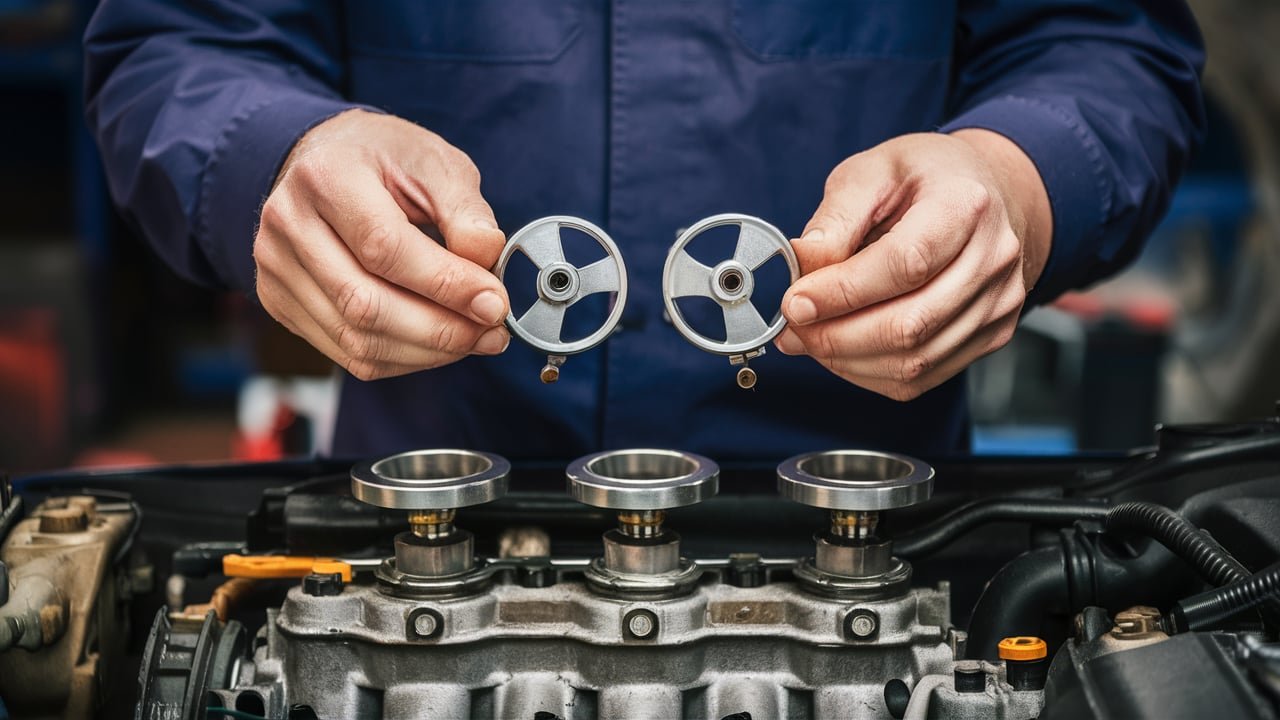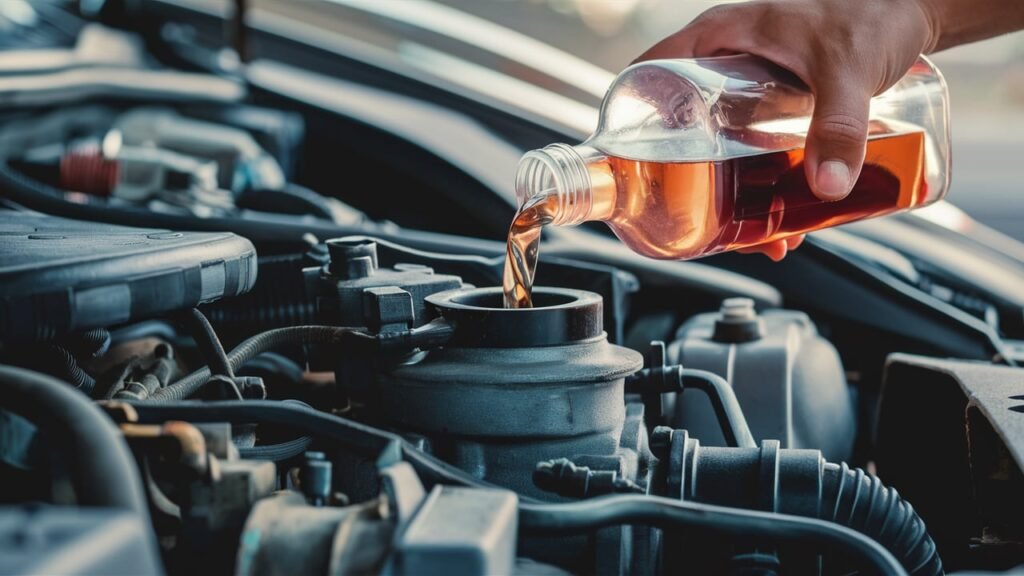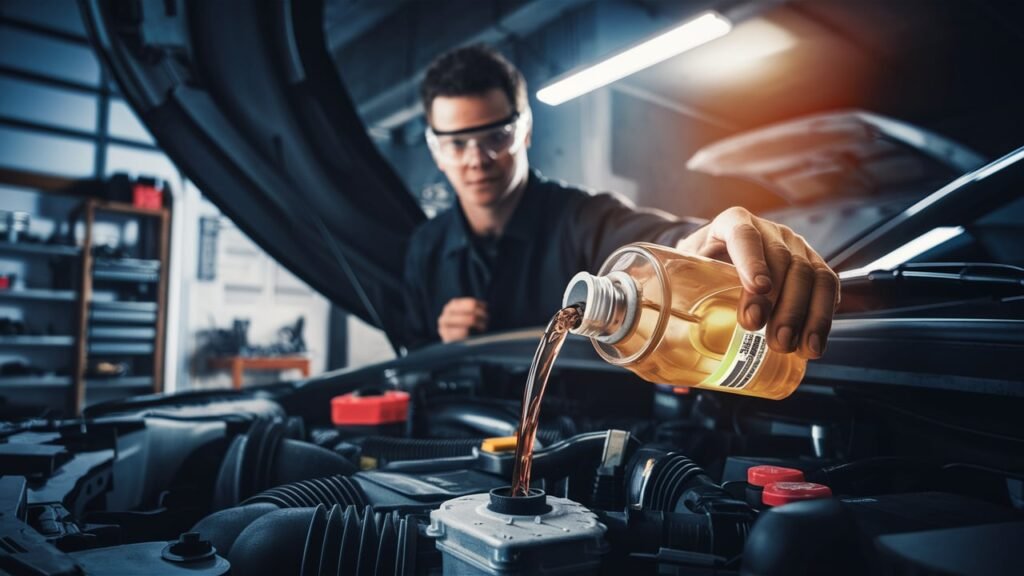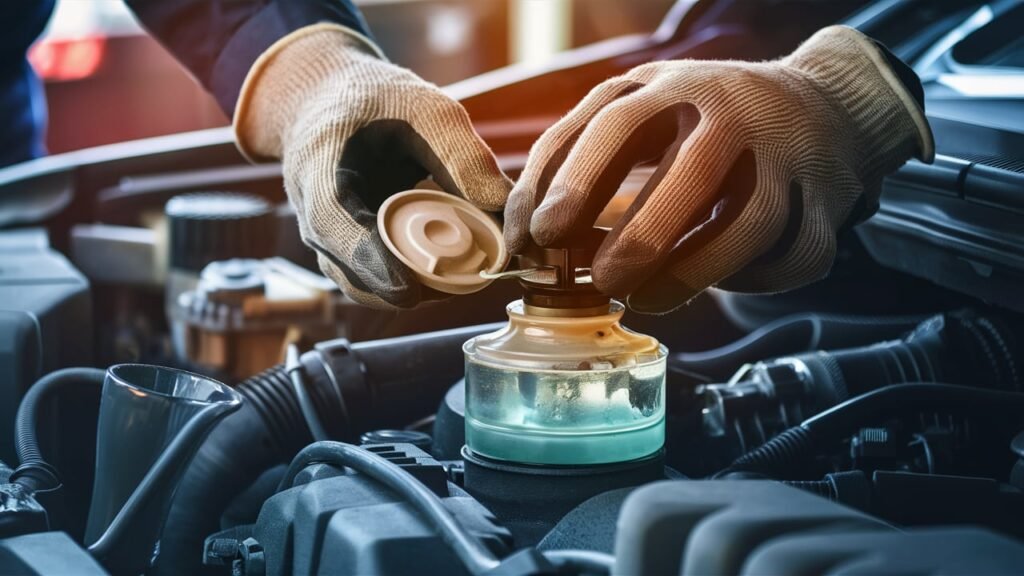
Unveiling the Complexities of Car Engine Valve
A car engine valve is a crucial component in an internal combustion engine that regulates the flow of gases into and out of the engine’s cylinders. There are two main types of valves: intake valves and exhaust valves.
- Intake Valves: These valves allow the air-fuel mixture to enter the combustion chamber. When the intake valve opens, the air-fuel mixture is drawn into the cylinder during the intake stroke of the engine cycle.
- Exhaust Valves: These valves allow the burnt gases to exit the combustion chamber after combustion has occurred. When the exhaust valve opens, the exhaust gases are expelled from the cylinder during the exhaust stroke of the engine cycle.
Key Functions:
- Regulating Air and Fuel Intake: Intake valves control the amount of air-fuel mixture that enters the combustion chamber, which is crucial for efficient combustion.
- Expelling Exhaust Gases: Exhaust valves ensure that the combustion byproducts are expelled from the engine, preventing back pressure and allowing fresh air-fuel mixture to enter the chamber.
Components:
- Valve Head: The part that seals against the valve seat to close the valve.
- Valve Stem: The long, slender part that moves up and down to open or close the valve.
- Valve Seat: The surface against which the valve head seals when the valve is closed.
- Valve Spring: A spring that returns the valve to its closed position.
Operation:
The opening and closing of the valves are synchronized with the engine’s pistons through the camshaft, which uses lobes to push the valves open at the appropriate times in the engine cycle.
Importance:
Proper functioning of the valves is essential for engine performance, efficiency, and emissions control. If a valve fails to operate correctly, it can lead to engine misfires, loss of power, increased emissions, and potentially severe engine damage.
In summary, car engine valves are integral to the engine’s ability to breathe and exhaust gases effectively, playing a pivotal role in the overall performance and efficiency of the vehicle’s engine.
The complexities of car engine valves involve various mechanisms and components that work together to ensure efficient engine performance. Here are some key aspects to consider:

- Valve Operation and Design:
- Valve Types: There are different types of valves, including flathead, overhead valve (OHV), and double overhead camshaft (DOHC). Each type has its own design and functionality
. Valve Function: Valves control the flow of air and fuel into the combustion chamber and exhaust gases out of it. They are responsible for sealing the combustion chamber and ensuring proper combustion.
Wear and Recession:
- Wear Mechanisms: Wear on valves and seats occurs due to the impact of the valve on the seat during closure and the sliding action under the action of the valve spring. Factors such as valve closing velocity, combustion load, and misalignment of the valve relative to the seat contribute to wear
. Lubrication: Proper lubrication of the valve-seat interface significantly reduces valve recession. Valve Rotation: Ensuring even wear and promoting debris removal from the valve-seat interface is crucial for maintaining valve health.
Modeling and Prediction:
- Wear Modeling: A semi-empirical wear model has been developed to predict valve recession based on fundamental wear mechanisms. This model can be used to give a quantitative prediction of the valve recession expected with a particular material pair
. Flow Charts: Flow charts have been developed to assist in diagnosing and rectifying valve-seat failures and reducing valve recession by design.
Industrial Implementation:
- Test Apparatus: A test apparatus has been developed to simulate the wear of both inlet valves and seats. This apparatus can be integrated into an industrial environment to help reduce costs and improve valve performance.
. Design Tools: Design tools have been developed to help reduce valve recession by design. These tools can be used to optimize valve design and improve overall engine performance.
Understanding these complexities is crucial for maintaining efficient and reliable engine performance, as well as for reducing costs and improving overall engine design.
In the intricate world of internal combustion engines, where power and precision converge, one cannot overlook the pivotal role played by car engine valves. These components, often deemed unassuming in appearance yet paramount in function, orchestrate the delicate dance of gas flow within cylinders.
Engine valves stand as sentinels at the crossroads of performance optimization, regulating the ingress and egress of gases with meticulous timing to propel vehicles towards peak efficiency.

For those entrenched in the realm of mechanics, automotive engineering, or sheer automotive ardor, a deep dive into the complexities of car engine valves unveils a realm teeming with technical nuances. The very essence of an internal combustion engine finds its essence in these understated yet indispensable elements.
As we embark on this journey to unravel the intricacies that define engine prowess, we delve into a domain where precision meets ingenuity – where each valve’s seamless operation dictates not only vehicular power but also fuel economy and environmental impact. Join us as we illuminate the cryptic elegance enveloping these seemingly modest contrivances and uncover how their mastery unlocks the true potential within our mechanical steeds.
Types of Engine Valves.
Engine valves are crucial components that play a vital role in the functioning of an internal combustion engine. Two primary types of valves – intake and exhaust – work in unison to ensure the engine operates efficiently.
Intake valves are responsible for facilitating the entry of the air-fuel mixture into the combustion chamber. It is essential that these valves open and close at precise timings to optimize air intake for combustion, directly impacting the engine’s performance.
On the other hand, exhaust valves serve the critical function of expelling burnt gases from the cylinder post-combustion. The timely opening and closing of these valves ensure that exhaust gases exit smoothly, preventing any backflow that could impede engine performance. Both intake and exhaust valves must operate seamlessly to maintain proper airflow within the engine cylinders throughout the combustion cycle.
Material selection for engine valves is a key consideration in optimizing their durability and performance characteristics. Commonly used materials include steel, titanium, and various alloys, each offering distinct advantages based on factors like strength, heat resistance, and weight.
Steel valves are known for their robustness and affordability, while titanium valves are favored in high-performance applications due to their lightweight nature that reduces inertia during operation. Alloys offer a balance between strength and heat resistance, making them suitable for a wide range of engine types.
Working Mechanism of Car Engine Valves.
Car engine valves play a pivotal role in the efficient operation of internal combustion engines. The working mechanism of engine valves is a precise dance orchestrated with meticulous timing and coordination. Valve timing, a critical aspect of this mechanism, synchronizes the opening and closing of intake and exhaust valves with the movements of the camshaft.
This synchronization ensures that fuel-air mixtures are injected into cylinders at the right moment and exhaust gases are expelled after combustion, optimizing engine performance.

Seal integrity is another key factor in the working mechanism of engine valves. A tight seal upon closure is vital to prevent any leakage during compression and combustion processes. Maintaining proper seal integrity not only enhances engine efficiency by preserving compression ratios but also contributes to reducing emissions, as it prevents unburnt fuel or exhaust gases from escaping through imperfect seals.
The impact of valve design on overall engine performance cannot be overstated. Different valve designs influence power output, fuel efficiency, and emissions control in distinct ways. For example, a well-designed valve head shape can improve airflow dynamics within the cylinder, enhancing combustion efficiency.
Material selection for valves also plays a crucial role; materials like titanium offer enhanced strength-to-weight ratios compared to traditional steel valves. Understanding how various aspects of valve design affect performance parameters is essential for automotive engineers and mechanics seeking to optimize engine functioning for different applications.
Valve Construction in car engines.
Valve Construction in car engines is a critical aspect that heavily influences the engine’s performance and longevity. Stem design plays a pivotal role, offering choices between solid and hollow stems for specific advantages.
Solid stems are known for their robustness and ability to handle high temperatures efficiently, crucial for engines operating under extreme conditions. On the other hand, hollow stems provide weight reduction benefits, contributing to improved engine responsiveness and reduced inertia during valve actuation. Automotive engineers often consider both options carefully based on the engine’s requirements for optimal functionality.
When delving into valve head shapes, it becomes evident how intricacies in design can profoundly impact airflow dynamics within the engine. Variations in head shapes can influence swirl patterns, turbulence levels, and ultimately combustion efficiency.
For example, a tulip-shaped valve head promotes better flow characteristics compared to a flat-faced design by reducing resistance to air movement during the intake stroke. Engineers meticulously study these aerodynamic factors to enhance engine performance while maintaining fuel efficiency and emission control standards.
Coatings and treatments.
Coatings and treatments serve as protective layers that significantly extend a valve’s lifespan by enhancing durability against wear and heat. Technologies like nitriding or chrome plating improve surface hardness and reduce friction between moving parts, leading to smoother operation over an extended period.
By implementing such coatings strategically on valves exposed to high temperatures or corrosive environments, automotive manufacturers ensure reliability under demanding conditions. This attention to detail in materials engineering highlights the importance of quality construction in maximizing an engine’s operational efficiency and longevity.
Maintenance and Troubleshooting.
Proper maintenance of engine valves is crucial for ensuring optimal engine performance and longevity. One critical aspect of valve upkeep is maintaining the correct clearance between the valves and camshafts.
Over time, wear and thermal expansion can lead to changes in this clearance, affecting valve operation and potentially causing issues such as poor sealing or decreased engine efficiency. Mechanics should routinely check and adjust valve clearances according to manufacturer specifications to prevent these problems.

Identifying signs of valve wear is essential for early detection and prevention of more severe issues. Symptoms like misfires, a loss of power, or unusual exhaust coloration can indicate underlying valve problems.
For instance, if a car experiences persistent misfires accompanied by a noticeable decrease in power output, worn intake or exhaust valves could be the culprit. Additionally, black smoke emitting from the exhaust may signal burning oil due to faulty valve seals or guides. Recognizing these warning signs early on can save costly repairs down the road.
Following recommended service intervals is key to effective valve maintenance. Guidelines typically include regular inspections, cleaning procedures, and eventual replacement based on factors such as vehicle mileage or operating conditions.
For example, high-performance engines used in racing applications may require more frequent valve inspections due to increased stress on components. By adhering to prescribed service schedules, mechanics can address potential valve issues proactively and keep engines running smoothly for years to come.
Performance Tuning.
In the realm of car engine performance tuning, optimizing the functionality of engine valves plays a crucial role in enhancing power output and efficiency. One popular method employed by enthusiasts and professional racers is the utilization of oversized valves.
By increasing the diameter of the intake and exhaust valves, more air-fuel mixture can flow into the cylinders, promoting better combustion and resulting in heightened horsepower levels. This modification is particularly beneficial for high-performance applications where maximizing airflow capacity can lead to significant performance gains on the track or street.
Another technique that experts often employ is multi-angle machining of valve seats. By altering the angles at which the valves make contact with their seats within the cylinder head, airflow dynamics are improved. This adjustment optimizes how air enters and exits the cylinders during engine cycles, enhancing combustion efficiency.

Through this precision machining process, mechanics can fine-tune valve seating positions to achieve better swirl patterns and turbulence control within the combustion chamber, ultimately boosting overall engine performance.
Additionally, upgrading valve springs is another critical aspect of performance tuning geared towards accommodating higher lift camshafts or increased RPM ranges. Stronger valve springs are essential for ensuring that valves close properly at higher engine speeds to prevent float or bounce as they follow more aggressive camshaft profiles.
Without adequate spring strength, valves may not fully seat or could even collide with pistons in extreme cases. Therefore, by enhancing spring stiffness while considering material durability and fatigue resistance factors, tuners can optimize valvetrain stability for improved engine reliability under demanding operating conditions.
Future Innovations in Valve Technology.
The advancements in valve technology mark an exciting phase of evolution within the realm of automotive engineering. Variable Valve Timing (VVT) systems are at the forefront, ushering in a new era of adaptive mechanisms that finely tune valve timing to suit varying driving conditions.
By adjusting the timing of valve opening and closing events, engines equipped with VVT can achieve heightened efficiency, improved power delivery, and enhanced fuel economy without compromising performance.
Cylinder Deactivation Systems represent another cutting-edge innovation poised to revolutionize engine operation. These systems intelligently deactivate valves in select cylinders under light load conditions, effectively reducing fuel consumption by optimizing engine operation to match demand.
Through this strategic deactivation process, engines can demonstrate increased fuel efficiency while maintaining the capacity to swiftly reactivate deactivated cylinders when needed. The integration of these groundbreaking technologies into modern engine designs not only showcases ingenuity but also highlights a commitment towards sustainable practices by maximizing fuel utilization.
As automotive engineering continues to push boundaries and delve deeper into intricate valve dynamics, it is evident that the future holds much promise for further enhancing the efficiency and environmental consciousness of car engines through continuous innovation and refinement.
How does valve wear affect engine performance?
Valve wear can significantly impact engine performance in several ways:
- Loss of Compression: Worn valves and valve seats can lead to a poor seal within the combustion chamber. This results in a loss of compression, reducing the engine’s power output and efficiency.
- Misfires and Rough Idling: If the valves do not seal properly, it can cause incomplete combustion of the air-fuel mixture, leading to engine misfires and rough idling. This can also result in a noticeable loss of engine smoothness.
- Increased Emissions: Poorly sealing valves can cause unburned fuel to escape into the exhaust system, leading to increased emissions and potentially causing the vehicle to fail emission tests.
- Decreased Fuel Efficiency: As the engine struggles to maintain proper combustion, it may use more fuel to achieve the same level of performance, thus reducing overall fuel efficiency.
- Engine Overheating: Inefficient valve operation can cause the engine to run hotter, as the proper expulsion of exhaust gases is compromised. This can lead to overheating and potential damage to other engine components.
Regular maintenance and timely replacement of worn valves can prevent these issues and help maintain optimal engine performance.

What materials are best for reducing valve recession?
Valve recession occurs when the valve and valve seat wear away, causing the valve to sink into the cylinder head. To reduce valve recession, certain materials are preferred for their durability and resistance to high temperatures and wear:
- Stellite: This cobalt-chromium alloy is commonly used for valve seats. It is highly resistant to wear and can withstand the high temperatures found in the combustion chamber.
- Hardened Steel: Valves made from hardened steel or with hardened steel inserts can better resist the wear caused by the constant opening and closing of the valves.
- Nimonic Alloys: These nickel-based alloys are often used in high-performance and high-temperature applications. They provide excellent resistance to heat and wear, making them ideal for exhaust valves in particular.
- Titanium: Although more expensive, titanium valves are used in high-performance engines due to their lightweight nature and excellent resistance to wear and high temperatures.
- Ceramic Coatings: Applying ceramic coatings to valve surfaces can further enhance their wear resistance and ability to withstand high temperatures, thus reducing the rate of valve recession.
Using these materials can help extend the life of the valves and valve seats, reducing maintenance costs and improving engine longevity.
How does combustion load influence valve wear?
The combustion load, or the force exerted during the combustion process, directly influences valve wear in several ways:
- Increased Temperature: Higher combustion loads generate more heat within the combustion chamber. This increased temperature can cause thermal stress on the valves, leading to accelerated wear, especially on the exhaust valves that expel hot gases.
- Pressure and Force: The increased pressure from higher combustion loads exerts more force on the valve seats and the valve faces. This additional pressure can lead to faster wear of these components as they are subjected to more intense mechanical stress.
- Valve Flexing: High combustion loads can cause valves to flex slightly each time they open and close. Over time, this repeated flexing can lead to metal fatigue and eventual failure of the valve material.
- Chemical Attack: Combustion byproducts, such as oxides and other corrosive compounds, are produced in higher quantities under heavier loads. These byproducts can attack the valve surfaces, contributing to wear and corrosion.
- Seat Wear: With increased combustion loads, the contact between the valve and the seat becomes more forceful, leading to accelerated seat wear. This can result in poor sealing, loss of compression, and increased valve recession.
Managing combustion loads through proper engine tuning, using high-quality fuel, and ensuring adequate cooling can help mitigate these effects and prolong the lifespan of engine valves. Regular inspection and maintenance are also crucial in addressing wear before it leads to significant engine performance issues.




